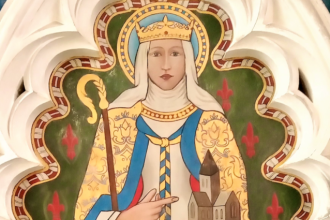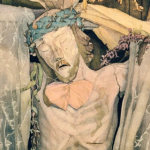Joseph Pearce
St. Withburga
Over the centuries, the English have been something of a curse to the Irish. English rulers, such as Henry VIII, Elizabeth I, and Oliver Cromwell, have sought to impose their will on the people of Ireland, often through the tyrannical use of terror on a defenseless population. There is, however, one sense in which the Irish have conquered not only the English but the whole English-speaking world.
This is through the towering figure of St. Patrick who reigns supreme on March 17, his feast day eclipsing even the feast of St. Joseph two days later. It is true that the English might claim, with patriotic petulance, that the great Irish saint was actually born in what is now England, but their plaintive protests fall on deaf ears. St. Patrick is the very epitome of Catholic Ireland, its patron saint and the very paterfamilias of the nation.
Considering the great Irish saint’s conquest of the world, it is clear that he does not belong among the unsung heroes of Christendom. There is, however, a little-known English saint who shares March 17 with St. Patrick as her feast day, even though she is never invited to the party. This is St. Withburga, an Anglo-Saxon princess, who was the youngest daughter of the king of East Anglia and the sister of the better-known St. Etheldreda. After living a reclusively religious life, she founded a religious community, dying before the building of the convent was completed. Fifty years after her death, her body was exhumed and found to be incorrupt.
Very little else is known about St. Withburga, but she serves as a representative of the numerous hidden saints of Anglo-Saxon England who should be much better known than they are.
The period of what might be called Anglo-Saxondom began with St. Gregory the Great’s sending of St. » Read More
https://theimaginativeconservative.org/2025/03/hidden-saints-withburga-seventh-century-england-joseph-pearce.html
The Hidden Saints of Seventh-Century England
Tags:
Img Conservative

https://theimaginativeconservative.org/





